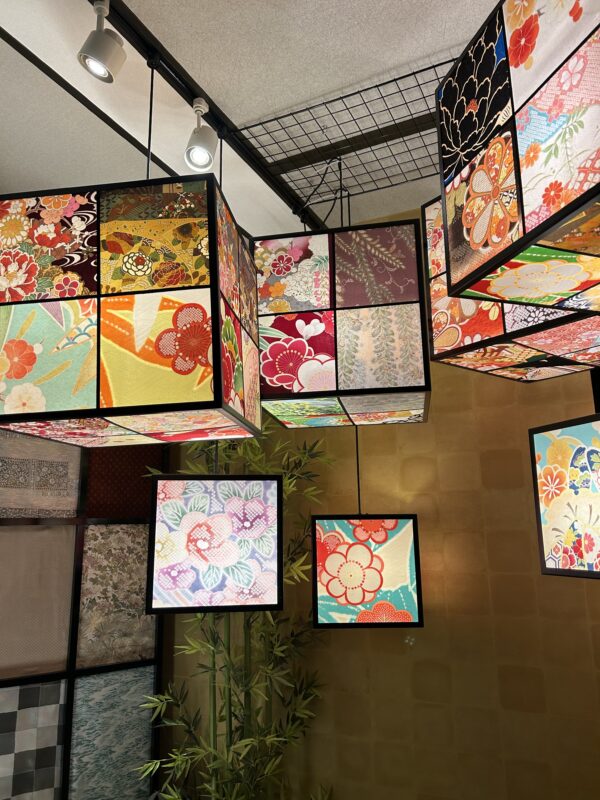
2025.06.15

ほとりから徒歩15分ほどの烏丸仏光寺にある西陣織あさぎ美術館にいってまいりました。
京都の伝統工芸である西陣織で浮世絵や世界の名画を再現されています。
ビルの1階では、陶器の犬が迎えてくれました。チケットを購入してエレベーターで7階へ上がり、タブレットを受け取り会場に入りました。
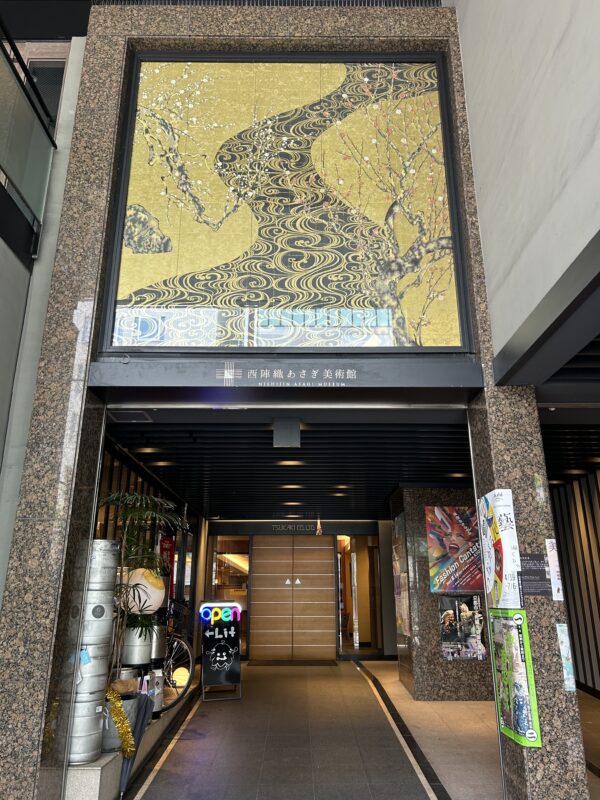
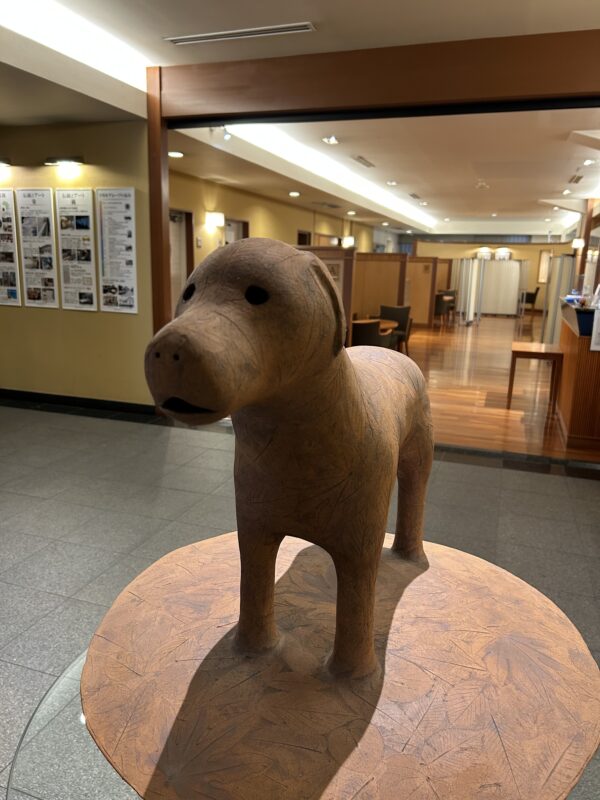
作品の説明をタブレットのビデオで聞く事ができます。
浮世絵を西陣織で再現した作品が沢山ありました。浮世絵の作家や歴史がわかりやすくまとめらえていて、久々に生徒の立場になって美術の授業を受けた気持ちになりました。

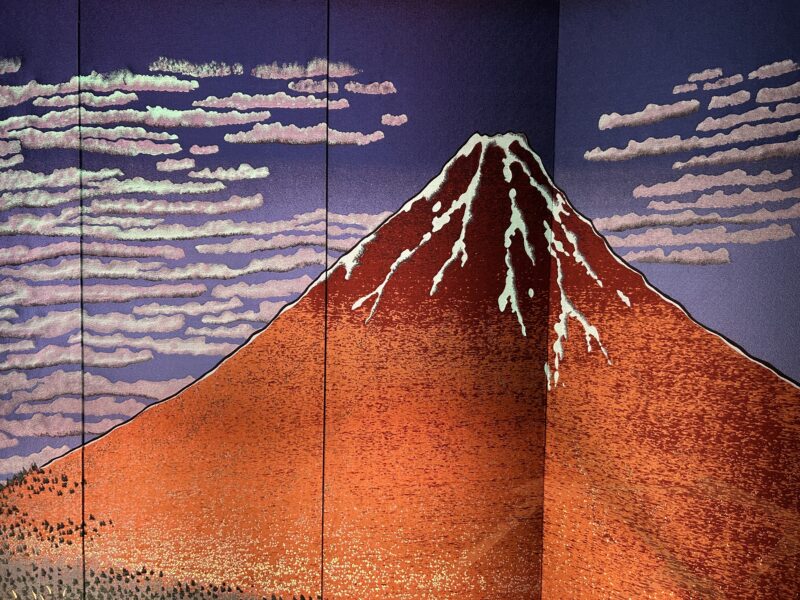
仏教美術、琳派、印象派の誰もがどこかで一度は目にした作品を西陣織で再現されています。
シアタースペースでは、これらの作品を作っておられる職人さんお作業の様子をビデオで鑑賞しました。根気が無くてはできない気の遠くなりそうな作業、糸を紡いで一本一本の糸をつなぎ合わせる作業、織元の指示通りに糸を染める染色作業、糸を束ねる職人さん、織り上げる職人さん、分業でそれぞれの段階で完成度が高く無ければ後々に迷惑がかかるとのことで、各職人さんが気の抜けない細やかな作業をされていることを知りました。最先端の織機を使いつつも二十ほどの工程と職人さんの高い技術が合わさってできる西陣織。日本の着物文化がとても時間と手間のかかる伝統文化であることを実感できる美術館でした。
個人的に一番美しいと感じたのは、ゴッホの『花咲くアーモンドの木の枝』でした。柔らかな青色が美しく家に飾りたい気持ちになりました。
また、ひまわりの作品が織られる前の10種類以上の黄色の糸の映像をみながら、ひまわりの絵を鑑賞し、そこに関わる職人さんの手間と技に思いを馳せました。
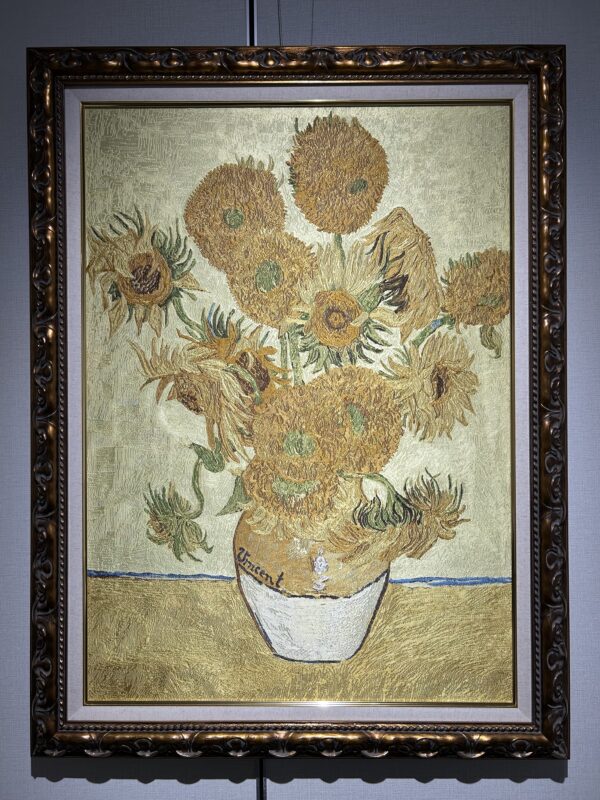
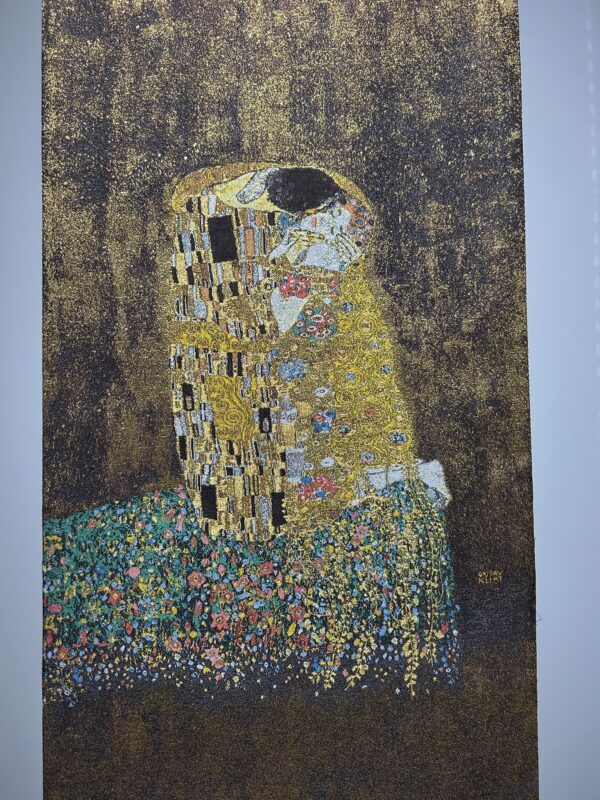

伝統産業は後継者不足で西陣織もその一つです。このように製作の過程を学んで、美しい作品を鑑賞できる美術館はとても貴重な場だと思いました。四条烏丸へのお買い物の際には是非行ってみてください。
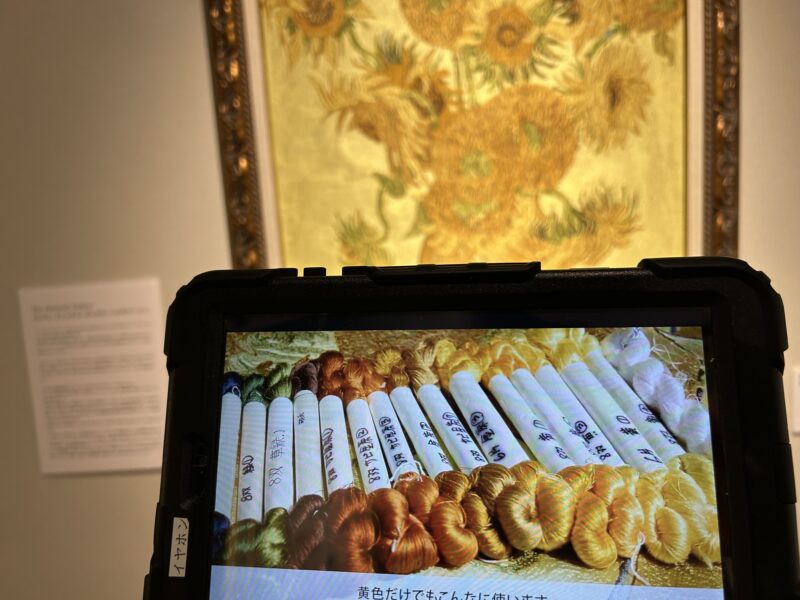
I visited the Nishijin Asagi Museum located in Karasuma Butsouji, a 15-minute walk from hotori.The museum reproduces ukiyo-e woodblock prints and famous paintings from around the world using Nishijin-ori brocade, a traditional Kyoto craft.
On the first floor of the building, I was greeted by a ceramic dog. I purchased ticket, took the elevator to the 7th floor, received a video tablet, and entered the venue.


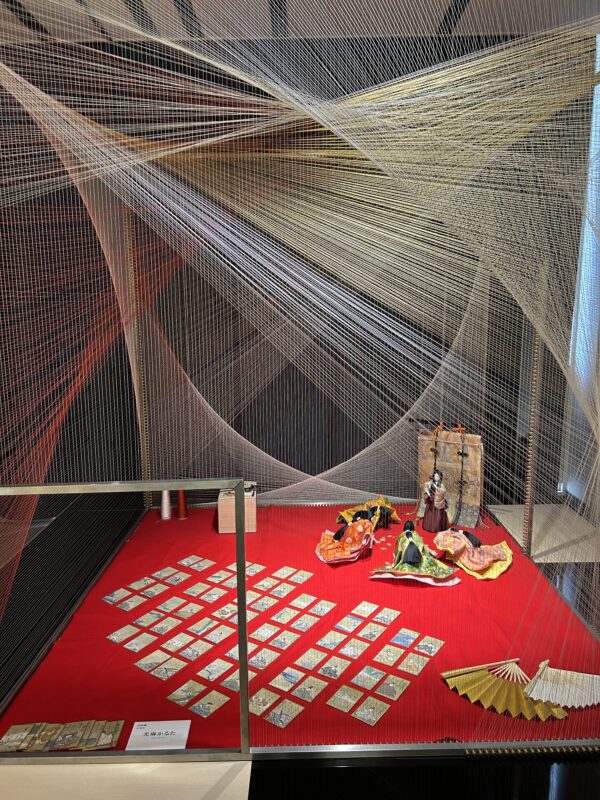
Visitors can use a video tablet to listen to explanations of the works. Many Ukiyo-e works were reproduced in Nishijin brocade. The history and artists of Ukiyo-e were clearly explained, making me feel like a student in an art class again.
The 1800 needle jacquard loom, which is four to nine times more delicate than traditional Nishijin brocade, is used. Works of Buddhist art, the Rimpa school, and Impressionism that everyone has seen somewhere at least once are reproduced in Nishijin brocade.


In the theater space, I watched a video about the craftsmen who create these pieces. I learned that each craftsman engages in meticulous and painstaking work that requires patience. This work includes spinning and joining individual threads, dyeing the threads according to the weaver’s instructions, binding the threads, and weaving. Each stage of the division of labor must be completed to a high degree of perfection, or there will be problems later on. I learned that each craftsman is meticulous in his work. Nishijin brocade is the result of about 20 processes that use state-of-the-art weaving machines and the high skill of the craftsmen. The museum made us realize that Japanese kimono culture is traditional and requires a great deal of time and effort.
I found Van Gogh’s “Flowering Almond Tree Branches” to be the most beautiful. The soft blue color was stunning and inspired me to decorate my home.
I also appreciated the sunflower paintings while viewing images of over ten types of yellow threads before they were woven. I thought about the time, effort, and skill of the craftsmen involved in this process.
Traditional industries are facing a shortage of successors, and the Nishijin brocade industry is no exception. I believe an art museum where visitors can learn about production processes and appreciate beautiful works of art is a valuable place. Please visit the museum while shopping in the Shijo-Karasuma area.

